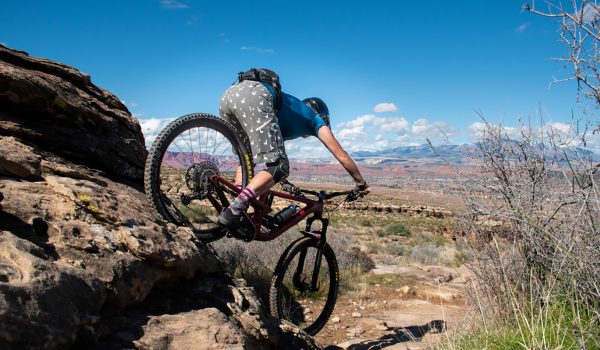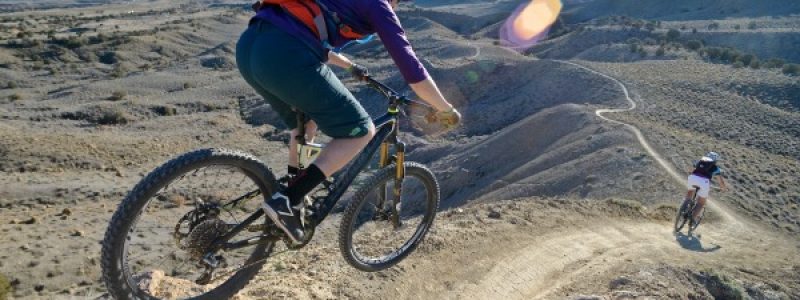
The Best Bike Shorts and Bibs
Our expert testers perform in-depth comparative field tests on fit, comfort, style and features and rate products on objective criteria to determine the best shorts for mountain biking for men and women.
We divided our reviews of the best Mountain Bike Shorts into two categories. One for men and one for women. Mountain bike shorts are typically baggy and designed to resist abrasion and offer more protection from trail hazards such as rocks, roots, branches and brush. Some mountain bike shorts come with an integrated chamois, while others do not.
We have broken down the bike short selection process into seven important criteria that will help you find the shorts that fit you and your riding style.
How to Select the Best Bike Shorts For You
The Best Bike Shorts and Bibs by: Marie Malinowski
The rule of thumb is that you should select a pair of shorts based on the type of riding you do. Are you a mountain biker or road cyclist? Are you an aggressive racer? Do you put in more than 100 miles of riding in a week’s time? Or a day? Is tooling around town occasionally more your style? Are you strictly a bike commuter? Gravel grinder? Asphalt only?
While it’s true that there are differences between road and mountain bike shorts, the reality is that any short, as long as it is padded and doesn’t restrict motion, will work. But let’s start by looking at the differences between the shorts.
- Mountain bike shorts: These shorts include the disciplines of cross country, enduro, and downhill riding. They are baggier and generally longer in the legs and are designed to offer more protection in a minor crash. Many also have wider leg openings to accommodate knee pads. Features include pockets, a variety of fabric weights, and ventilation panels.
- Road bike shorts: These shorts include the disciplines of recreational, commuting, cyclocross and road riding. Road bike shorts are stretchy and form fitting and generally have six to eight panels to achieve a precise fit. Because there are no loose materials, they’re very aerodynamic. Features include longer-cut legs to prevent saddle chafing and leg grippers to keep them in place. Many mountain bikers wear road bike shorts under their baggies and mountain bike racers will wear road bike shorts.
- Bibs: These shorts are the favorite of racers. They come up higher over the stomach and back and don’t dig into the waist or expose the lower back when you lean forward. Like road shorts, they are form-fitting and made of stretchy material. Features include shoulder straps and leg grippers.
Now let’s dive deeper into the type of riding you do to help get the short selection process started.
Mountain biking
Mountain biking is performed on a variety of terrain and that ultimately drives how much padding and protection a mountain biker needs. In many cases, it comes down to the rider’s individual preference, but the general guideline is that you’ll want to consider inseam length, leg width and the placement and amount of padding in the chamois. Some mountain bike shorts come with detachable liners and some come with no liner at all. Generally, integrated chamois are of lower quality.
Because mountain bikers ride in a more upright position than road bikers, the chamois should be positioned slightly more toward the rear. For padding thickness, you’ll want to consider how much time you’ll be in the saddle versus off the saddle on ascents, descents or navigating rough terrain.
- All-mountain/enduro riding: In this discipline, the terrain is rougher and there are challenging features like rock gardens, log piles and low to moderate drops and jumps. The more advanced riders pursue both steep technical descents and high incline climbs. The emphasis is on endurance, core strength and balance, bike handling skills and self-reliance, so riders will spend plenty of time off the seat. Look for shorts with a heavier fabric and longer inseam to provide protection and leg openings wide enough to accommodate knee pads, such as the Shredly Jana short for women and Pearl Izumi Launch short for men. As most mountain bike shorts do not come with an integrated chamois, you’ll need to purchase one separately. For all-mountain and enduro riding where you spend more time out of the saddle, look for a chamois with a nicely-articulated shape. Padding does not have to be as dense and thick, but for optimum comfort, it should be moisture-wicking.
- Downhill riding: This discipline of mountain biking includes very steep descents and rough terrain. Courses include large jumps of 25 feet or more, drops of 10 feet or more, and are rough and steep from top to bottom, so the cyclist is typically standing up on the pedals the entire time. In addition to shorts, a downhill rider needs goggles and body armor (knee pads, elbow pads and neck protection, and heavy-duty gloves). The emphasis is on balance, handling skills and pluck. Look for long inseams and wide leg openings for kneepads and other body armor, such as the Troy Lee Designs Ruckus shorts for men and the Pearl Izumi Elevate short for women. You will want the fabric to be heavier and more durable to help protect against scrapes in a crash. Many downhill riders find that combining a chamois with the heavier and more durable fabric of downhill shorts makes the shorts uncomfortable and restrictive so look for either a chamois with very thin padding or just forgo the chamois altogether.
Road Riding
As the name implies, road riding is done on asphalt roads. Because road bikers ride in a more downward position than mountain bikers, the chamois should be positioned slightly more towards the front. Road bikers ride faster and rarely stop. Shorts are single layer to keep you cooler and form fitting to reduce wind resistance.
- Long-distance road riding: Arguably the most popular form of cycling, road riding includes racing, touring and ultra-cycling. To some road cyclists, 25 miles is long-distance while to others, anything less than 100 miles isn’t. The emphasis is on speed, endurance and long hours sitting. Cyclists should look for a high-density chamois with multiple thickness points that come in contact with different areas of the body.
- Gravel riding (aka gravel grinding): Gravel riding is riding on surfaces such as asphalt, gravel, dirt, some singletrack trails and maintenance or fire roads. Distances can vary between 50-150 miles or longer. The emphasis is on speed, endurance and long hours sitting. Cyclists should look for a high-density chamois with multiple thickness points that come in contact with different areas of the body.
- Commuting: Using the bicycle to travel from home to a workplace or school. Distances usually range from 1 to 25 miles on bike paths, dedicated bike lanes or urban streets. The emphasis is on comfort. Cyclists should look for a mid-density chamois and a short that is thin enough to wear under pants, jeans or a skirt.
- Recreational riding: Rides are short and infrequent and done on asphalt bike paths, mountain bike trails, hard-packed dirt roads or gravel. The emphasis is on comfort. Cyclists should look for a low-density chamois and a short that is thin enough to wear under pants, jeans or a skirt.
Consider Bike Short Construction
For mountain bike shorts, the inner short material should wick away sweat and provide support to your muscles. The outer short should be heavier in weight for durability, stretch enough to allow an unrestricted pedaling motion, and have some water-resistant properties. Lighter fabrics, such as those used in the ZOIC Naveah shorts, will be cooler than the heavier fabrics used in shorts such as the Specialized Enduro Pro.
Road bike shorts are stretchy, form fitting and streamlined to eliminate wind resistance that could slow you down. Bibs share those traits and usually have more mesh in the upper half to promote cooling. As you read through the reviews and tests at Gear Institute, you’ll come upon the following terminology used in the construction of bike shorts. Below are the details behind the terms:
- Lycra/Spandex: The base for most cycling-short fabrics because of its stretch and durability. Spandex is mixed with other yarns such as polyester to promote moisture transfer and breathability.
- Leg grippers: Silicone or rubber “grippers” on the leg opening prevent the shorts from riding up the leg.
- Stitching: Seams that are flat (aka “Flatlock seams”) don’t scratch the skin and cause chafing. Cyclists wearing high-end shorts and bibs should never feel seams. Double-stitched shorts will hold up longer than shorts with single stitching. Shorts with straight, tight seams and stitching are of higher quality than those with loose seams.
- Panels: Bike shorts are constructed in panels, which contour the shorts to fit the body in the cycling position. Higher-end shorts are usually eight-panel designs and less-expensive shorts are usually six-panel designs. Shorts with a four-panel design are most appropriate for recreational or commuter riding in which distances are shorter and the cyclist is in more of the upright position on a wide, comfortable, padded gel seat. There are also panel designs referred to as a 4/6 panel or 6/8 panel. These panels are cut more anatomically and with fewer seams.
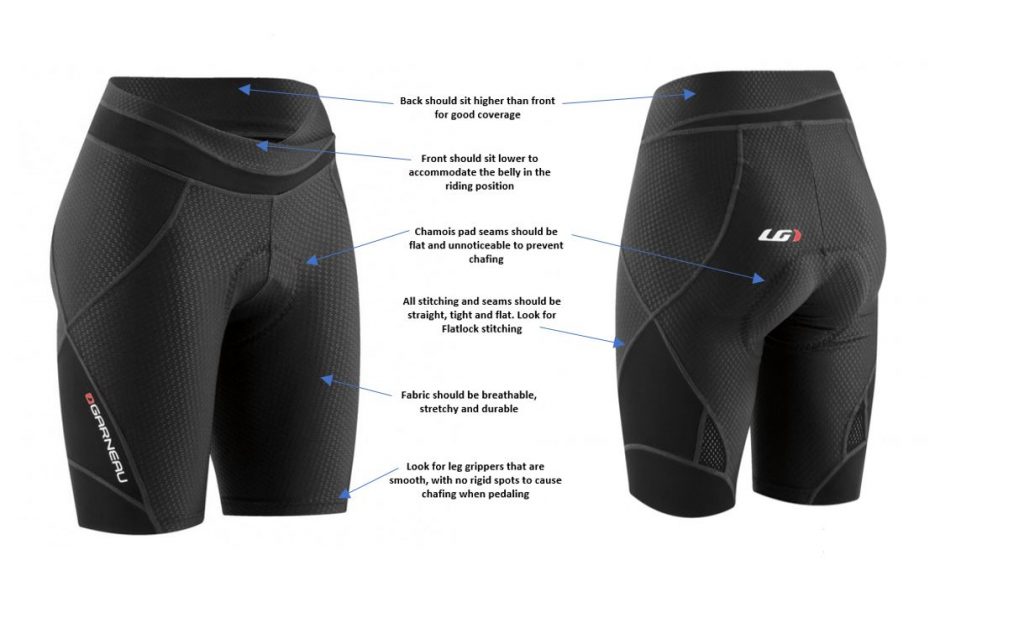 Consider the Chamois
Consider the Chamois
Not only do chamois offer cushioning between your nether regions and saddle, it also supports your sit bones, prevents numbness and chafing, and transfers moisture away from your body. As you research your next pair of bike shorts, you’ll see references made to the following terms below:
- Anatomic or 3D: Shaped according to the rider’s anatomy, rather than sewn in flat.
- Antimicrobial: Made with materials such as silver ions and bacteriostatic carbon to fend off germs.
- Four-way Stretch: Moves in all directions with the shorts to help prevent bunching and binding.
- Moisture Wicking: Uses technical synthetic fabrics to speed moisture transfer away from the body and keep you dry.
- Multi-density/thickness: Where the foam in the padding is denser in certain places such as under the sit bones and slimmer in the sensitive perineal region.
- Multi-thickness: When it’s made with variable amounts of padding – thicker under the sit bones.
Men’s Shorts vs Women’s Shorts
Men’s and Women’s cycling shorts are made from the same materials (Lycra, Spandex, Nylon, etc.) and with the same level of durability. However, there some differences despite the obvious styles and colors.
- Chamois: Chamois pads are designed to provide cushioning where it’s needed, and to work in conjunction with the saddle. As men and women have different structures that require padding and support in different places, men and women should buy chamois that fit accordingly.
- Inseams: Inseam length is a matter of personal preference. Up until recently, men’s shorts had longer inseams than women’s. But not all women prefer this and there are options for longer baggy and non-baggy shorts. The general guideline is that the short should hit a few inches above the knee.
Consider Fit
Fit is very important when selecting bike shorts. Both mountain bikers and road bikers wear a chamois, so you’ll want your bike shorts (road) or inner liner (mountain) to fit snug. If the shorts are too large, the chamois can move around and cause chafing.
For mountain bike shorts, you will want the outer short to be forgiving enough to accommodate an inner liner without it being so tight that it is uncomfortable, taxes the seams or restricts your movement.
Caring for Bike Shorts
Although many shorts have antimicrobial properties built into the chamois, bike shorts are still a breeding ground for bacteria and should be washed after each wearing. Wash your chamois inside-out, so that it’s exposed to the maximum amount of water possible and hang to dry.
Chamois Aren’t Forever
The lifespan of a chamois depends on how often you ride. Over time, chamois padding will eventually ‘pack down’ and become unable to perform its function. The best indicator that it’s time to replace your chamois is discomfort. Basically, a good chamois should ‘disappear’ during your ride. If you’re actively noticing your chamois, it’s time for a new one.
Best in Class
Norrona fjørå flex1 Shorts (M)
Bike Shorts & Bibs, Biking & Mountain Bike Shorts for Men
Depending on your colorway, these shorts scream Euro Downhiller. The slim, cut works great for the very thin, or people more interesting in standing on the pedals and descending. They’re also best suited for cool-weather riding. Ringing in at more than $150, the shorts justify their price with the plush, protective shoftshell fabric and a horde of pockets and vents. Essential shorts for anyone riding headlong into challenging terrain.
Best For Hot Weather
Gore C5 Trail Light Shorts
Bike Shorts & Bibs, Biking & Mountain Bike Shorts for Men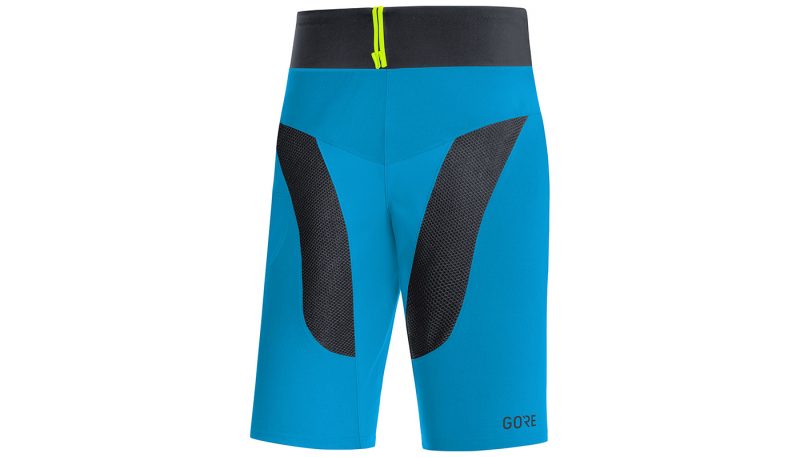
Gore’s C5 Trail Light Short is the best warm weather short we’ve tested. Lightweight fabrics and huge mesh vents mean you’ll be as comfortable as possible in even the hottest weather. Very stretchy fabric means that even the snug cut isn’t constrictive when pedaling hard or snagging shifting body positions on the seat. Not a great short for cold weather riding, but an ideal part of any summer riding kit.
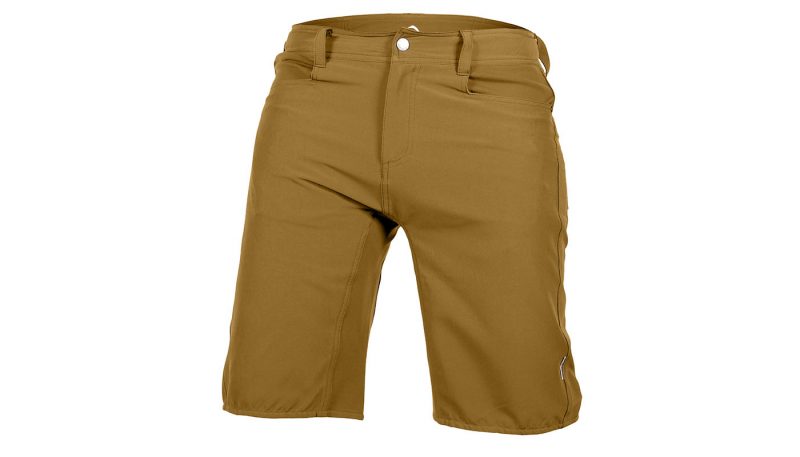
A sharp-looking, versatile short, the Chachi upholds Club Ride’s style-first MO. They ride great, too, with a silky, stretchy fabric ensuring easy pedaling and ease of dismount. Our only quibble is that the hip cargo pockets should be larger.
Most Versatile
Backcountry Full Suspension Shorts-Men’s
Bike Shorts & Bibs, Biking & Mountain Bike Shorts for Men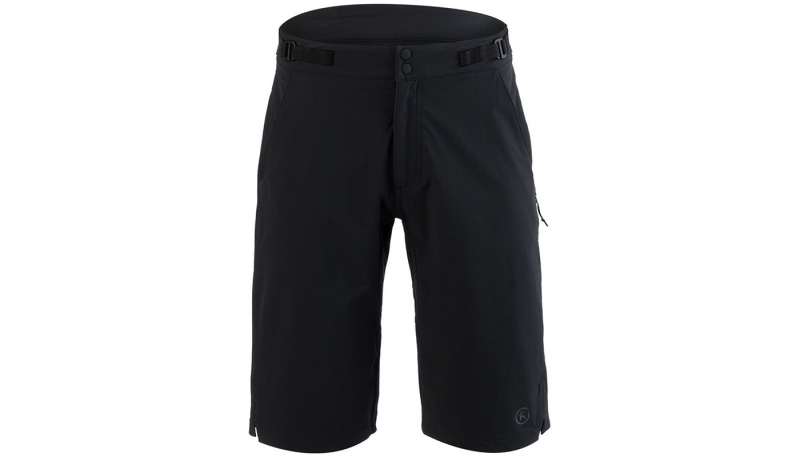
Backcountry’s Full Suspension Short is a pitch-perfect take on an all-around trail short. It’s stretchy enough, light enough, and protective enough for riding anytime, anyplace. Remarkable for a company just launching into apparel, the fit is very dialed.
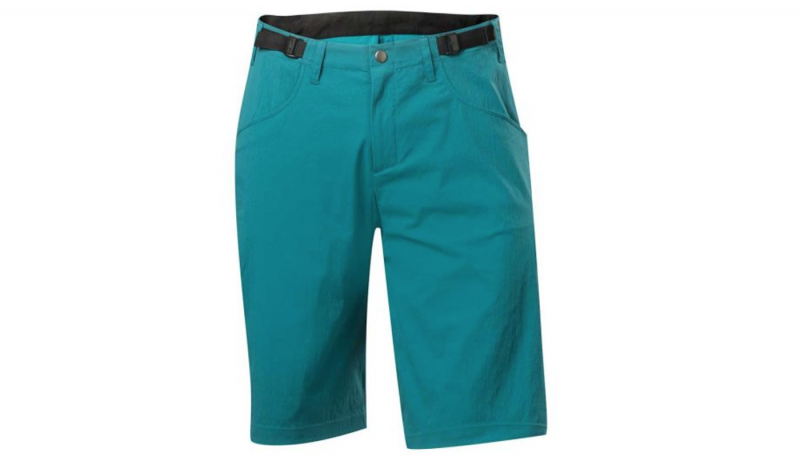
The 7Mesh Glidepath shorts have a relaxed and articulated fit. They are made with a light-weight ripstop fabric that has just enough stretch to ensure a comfortable ride and the large rear pockets are the most functional of all the shorts in the test. However expect to pay a premium to ride in a pair.

The Pearl Izumi Women's Launch Short have a relaxed and articulated fit. They are made with a medium-weight ripstop fabric that offer outstanding protection and the leg openings that easily accommodate knee pads. However the weightier fabric makes them best suited for all-mountain riding where the cyclist is not continuously pedaling.

The Patagonia Dirt Roamer shorts have a streamlined slim fit. They are made with a lightweight fabric that is Bluesign approved and breathes well on warm days. However, they run small and the tapered legs have limited kneepad compatibility.
Best For: The aggressive singletrack rider in humid conditions
Maloja RoschiaM
Bike Shorts & Bibs, Biking & Mountain Bike Shorts for Women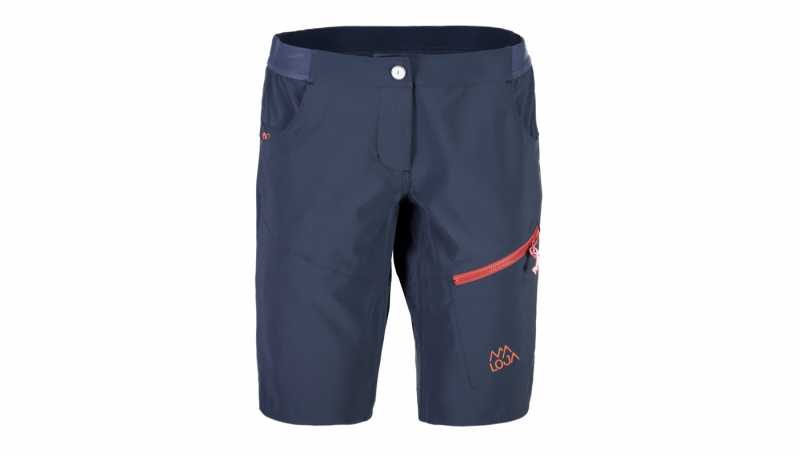
The Maloja RoschiaM shorts are the most comfortable, most breathable and best-ventilated shorts in the test. They offer an articulated fit that is semi-fitted across the hips but flared in the lower legs to accommodate kneepads. However their lightweight stretchy fabric don’t inspire confidence in durability in the event of a crash.







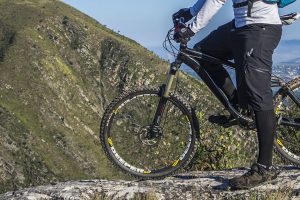
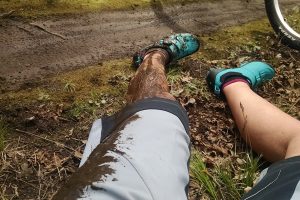
 89
89 